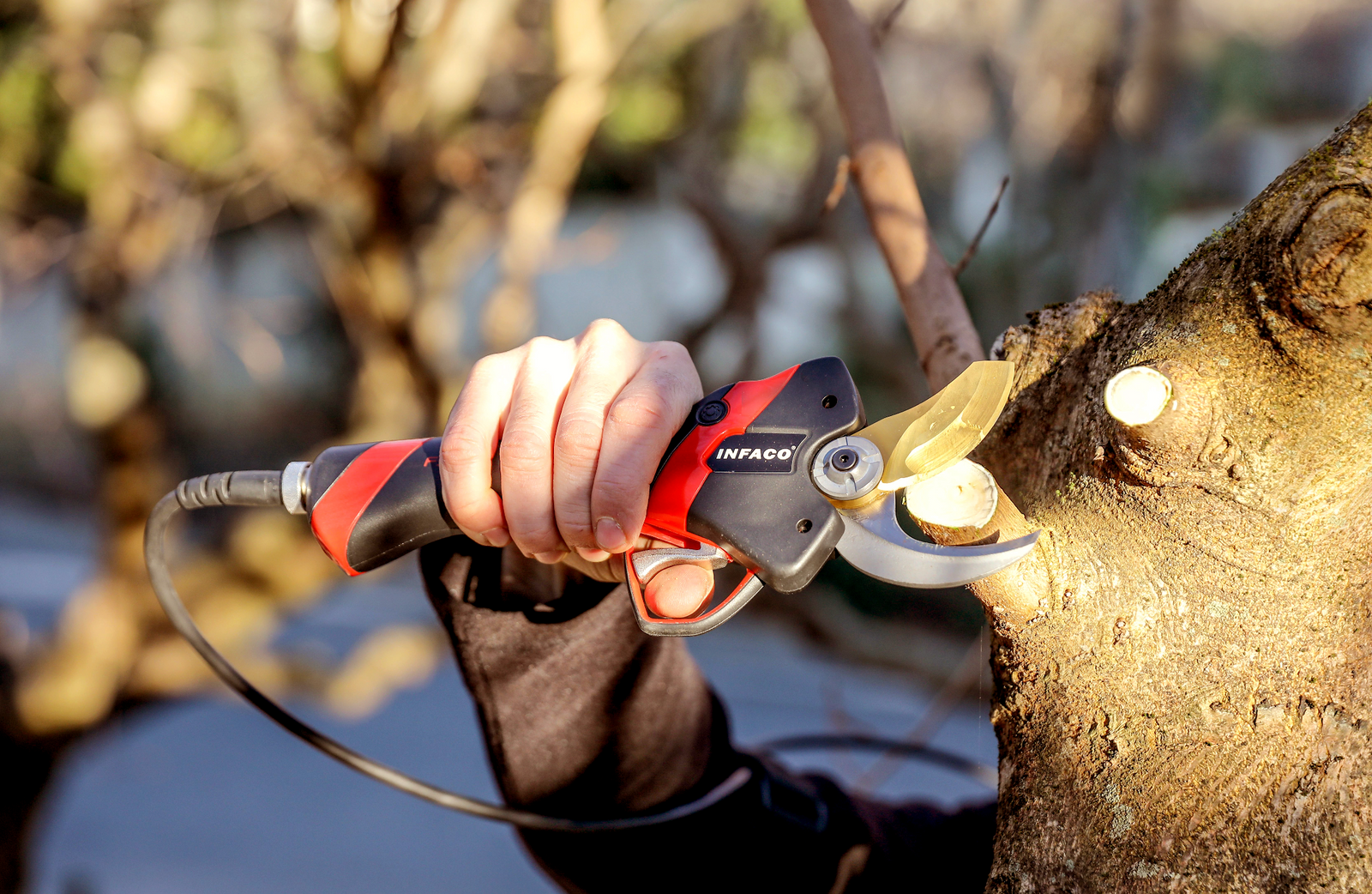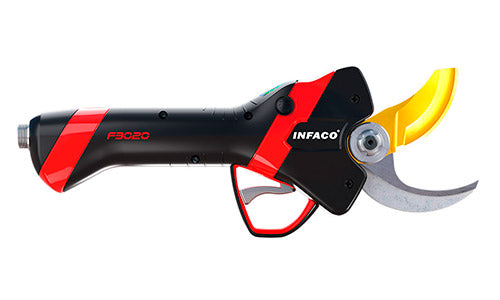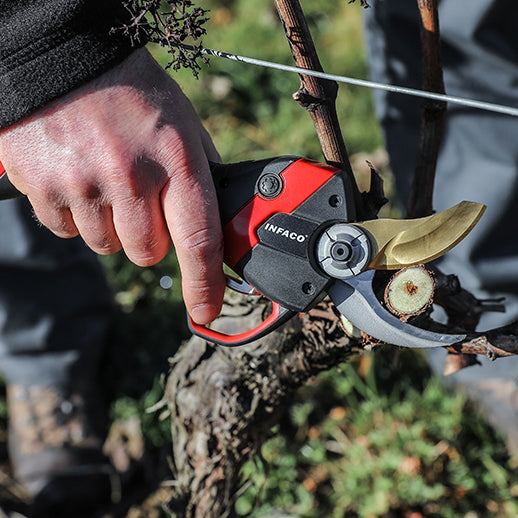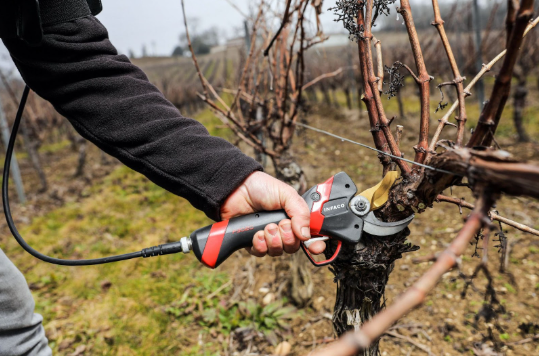Pruning Timing for Apple & Nut Trees: How to Get It Right

Pruning is one of the most critical tasks for maintaining the health and productivity of your orchard. Whether you’re managing apple trees in Washington or nut trees in California, timing your cuts right makes all the difference.
In this article, we’ll break down:
-
The best time to prune trees by type
-
Mistakes to avoid during pruning
-
And the tools that will get the job done efficiently and safely
Let’s help you prepare for a stronger, more fruitful season.
Pruning Windows by Tree Type
🍎 Apple Trees
For most apple varieties, the ideal pruning time is late winter to early spring, just before new growth begins. That usually means January to early March, depending on your climate.
Why this window works:
-
Trees are still dormant = less stress
-
You can clearly see the structure without leaves
-
Disease pressure is lower in cooler temps
Late winter pruning stimulates growth exactly where you want it — leading to better fruit set and air circulation.

🌰 Nut Trees (Walnuts, Pecans, Hazelnuts)
Nut orchards should also be pruned during dormancy, typically between January and early March in most U.S. growing regions.
Key considerations:
-
Walnuts and pecans bleed sap if pruned too late — avoid pruning after bud swell
-
Be cautious with large branch cuts; sealants can reduce disease risks in some cases
-
Remove dead wood, overcrowded limbs, and sucker growth annually
Remember: the best time to prune trees is when you're setting your orchard up for success — not just reacting to problems.
Timing Mistakes to Avoid
Even experienced growers can get tripped up on timing. Here are 4 common errors to watch out for:
1. Pruning too early in winter
Pruning during deep freeze (December or early January) can expose fresh cuts to frost damage, especially in northern states.
2. Pruning after buds break
This can stress the tree and reduce yield. It also increases the chance of disease infection and saps tree energy.
3. Wet weather pruning
Avoid cutting in rainy or foggy conditions — open wounds + moisture = fungus problems waiting to happen.
4. Ignoring variety-specific timing
Some late-harvest nut varieties need slightly delayed pruning to avoid sap loss. Always check varietal guides.
What Tools Work Best
Tool choice impacts cut quality, safety, and speed. Here’s a quick rundown of what professionals use in U.S. orchards today:
✂️ Manual Bypass Pruners
Great for detail work on young trees or cleanup cuts. But not ideal for heavy pruning days.
🔧 Loppers
Useful for mid-size limbs (1–2 inches), especially in nut orchards. Two-handed operation limits speed.
🪚 Orchard Pruning Saws
Essential for deadwood removal and major limb shaping. Look for curved blades for better leverage.
⚡ Electric Pruners (e.g., INFACO F3020)
This is where things get interesting.
-
Cut up to 30 branches per minute
-
Choose blade heads (Standard, Medium, Maxi) to match tree size
-
Work all day on one charge
-
Lighter on your hands = less operator fatigue
Electric pruning tools are the future of commercial pruning in the U.S. orchard industry — and they’re already changing how crews work across the country.
Real Orchard Example
📍 Location: Central Valley, CA
Before:
Manual crews pruned 7 acres/day with hand tools.
After switching to electric tools:
Fewer crew members covered 11 acres/day. Downtime dropped, and training new hires was easier thanks to tool safety features.
Estimated ROI: tool paid for itself in under 1.5 seasons.
How Maintenance Extends Tool Life
Whether you’re using manual or powered equipment, good maintenance matters. First step, power off. Then:
-
Clean blades after every shift
-
Check tension and alignment weekly
-
Sharpen cutting edges regularly
-
Lubricate moving parts and check batteries monthly (if electric)
Pro tip: Electric pruners like the F3020 feature modular designs, meaning you can replace worn parts in minutes — without sending them in for service.
Why Durability = Long-Term ROI
Buying smart doesn’t always mean buying cheap. A tool that holds up over 5–8 seasons is far more valuable than one that needs replacing every 2 years.
Look for tools that offer:
✔ Extended warranties (INFACO offers 3 years standard)
✔ Modular, serviceable design
✔ Field-tested durability under American orchard conditions
Durability is a decision. It’s the difference between running efficiently and losing time — and money — every pruning season.

When you understand the best time to prune trees, avoid common timing mistakes, and use the right tools, you’re setting your orchard up for success year after year.
Whether you’re running an apple orchard in Michigan or a walnut grove in Oregon, pruning is your most important preseason move. Make it count.
✅ Prune during dormancy
✅ Avoid early frost and wet weather
✅ Invest in tools that last
For American growers ready to upgrade their pruning game, INFACO tools offer unmatched performance, safety, and ROI.









